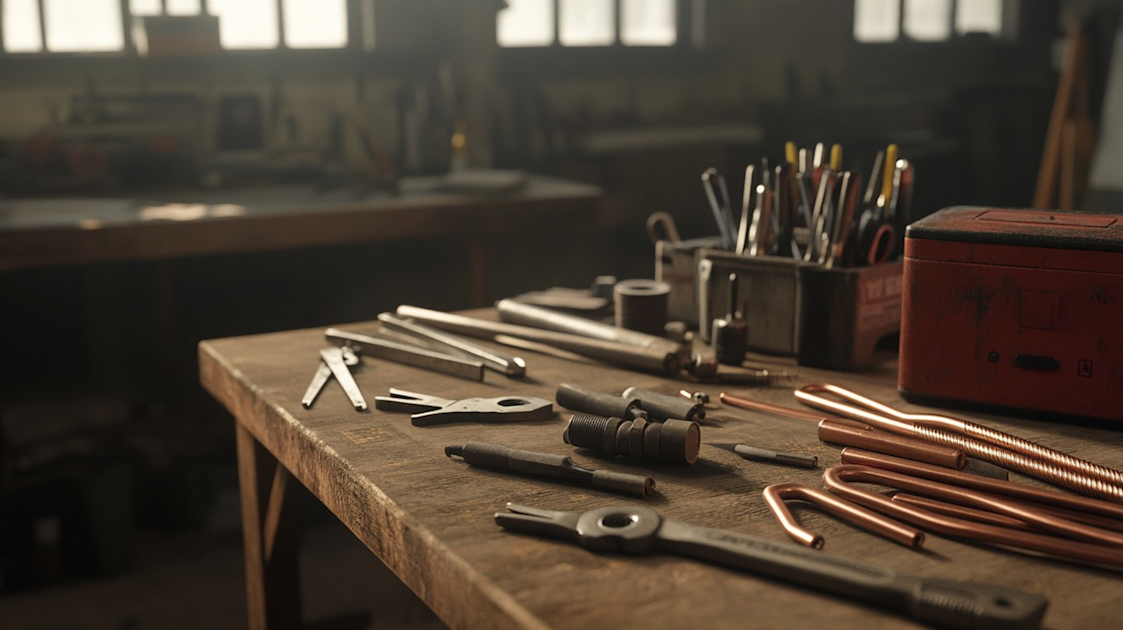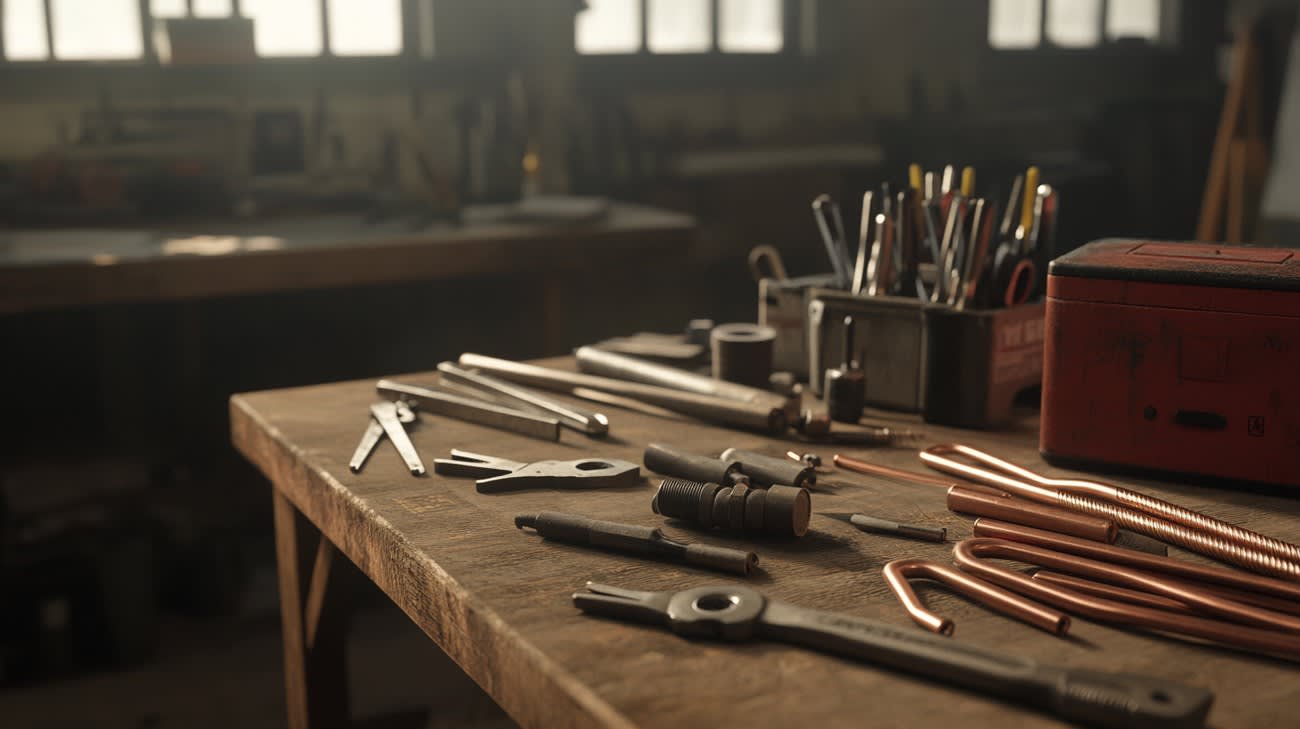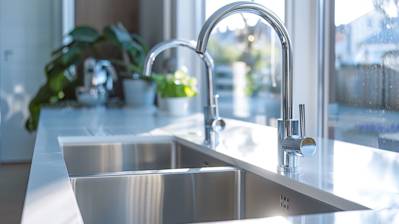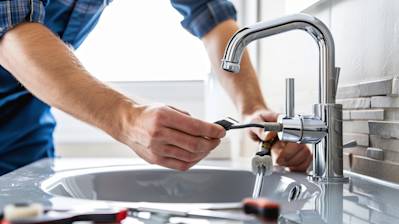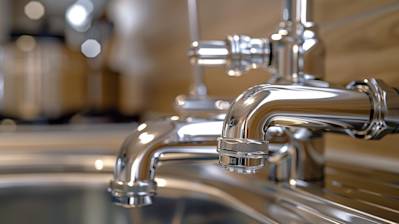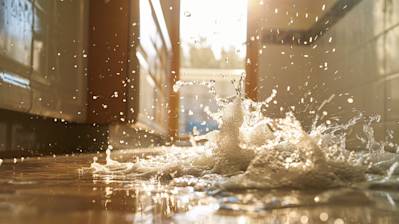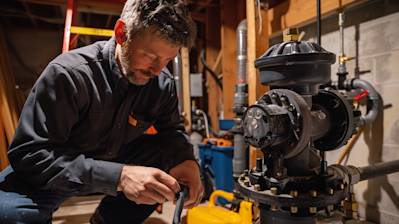For someone new to the world of plumbing, it might be baffling to see the range of plumbing tools stacked up in a hardware store. Even professionals continue to discover new inventions that aim to make their work quicker, precise, and less strenuous. As house owners or aspiring plumbers, understanding common tools in a plumber's arsenal can save you time and money when handling minor plumbing tasks. This detailed guide on plumbing tools offers insights into the most essential tools you will need to get started on basic plumbing work.
Understanding Plumbing Tools and Their Applications
Wrenches
Wrenches hold a pivotal role in the plumbing industry. Here's a closer look at some common types used:
- Adjusting Wrench: For tweaking supply lines and compression fittings.
- Pipe Wrench: Ideal for tightening and loosening threaded pipes, fittings, and nuts.
- Basin Wrench: Designed for tough to reach spots beneath sinks and basins.
Pliers
Pliers, especially tongue-and-groove pliers, are indispensable for plumbers due to their adjustability and gripping power. They can turn, pull, hold, tighten, and loosen various components, making them multi-purpose tools in plumbing.
Pipe Cutters
These powerful tools cleanly cut through different types of pipes. Here are common variations.
- Tubing Cutter: Useful for tight spaces, can cut copper and brass tubing.
- Hacksaw: Ideal for cutting plastic and metal pipes.
- PVC Pipe Cutter: Specifically designed to cut through PVC pipes with precision.
Innovative Plumbing Tools That Reinvent the Trade
Press Fitting Systems
These modern systems provide a quicker, flame-free alternative to soldering. Press fitting permits technicians to securely connect pipes in seconds, thereby saving both time and labor.
Inspection Cameras
These extendible, waterproof cameras allow professionals to identify blockages or faults deep within pipes without extensive excavation or pipe removal.
Thermal Imagers
Non-contact thermal imagers can detect pipe leaks behind walls by identifying temperature differentials, ensuring quicker and less intrusive repairs.
The Lesser-Known Yet Crucial Plumbing Tools
- Closet Auger: This specialty tool is used to clear clogs in toilets.
- Plumber's Snake: An effective tool for removing obstructions in smaller drain lines.
- Teflon Tape: Used to seal pipe threads and prevent leaks at joints and fittings.
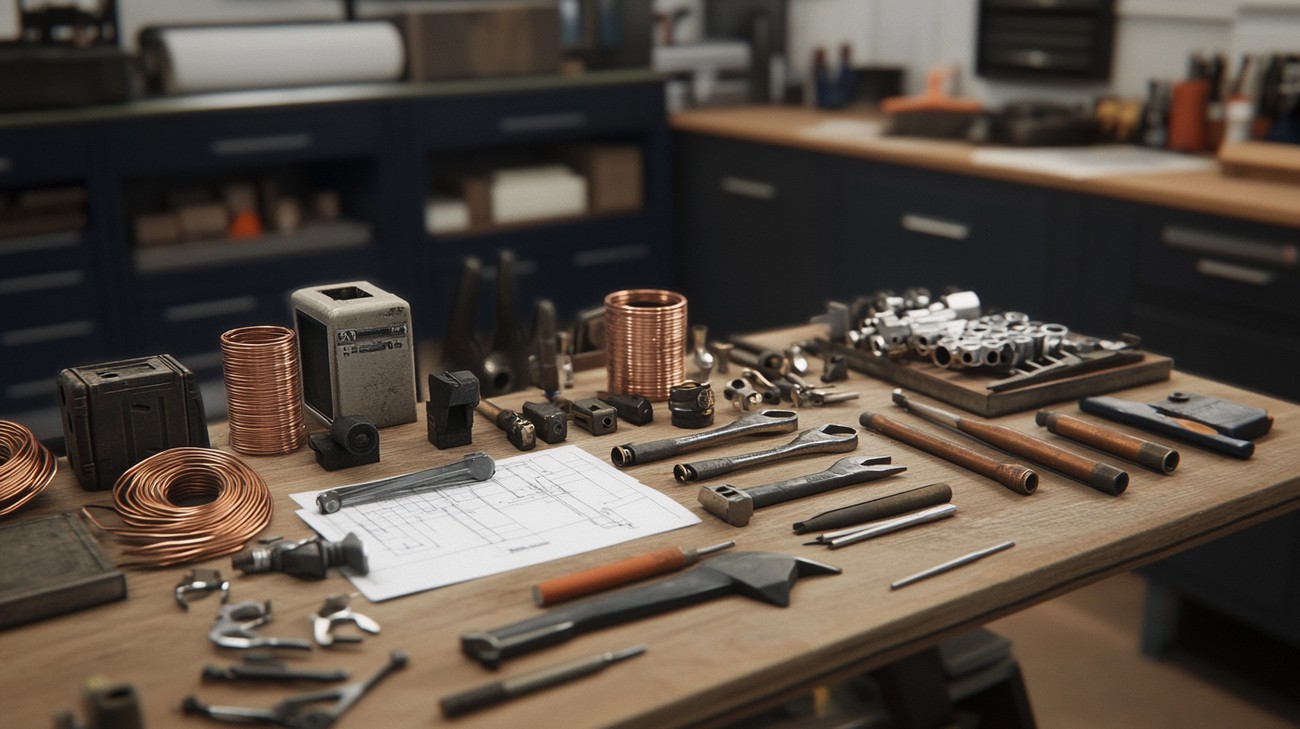
Frequently Asked Questions about Plumbing Tools
What is the function of a pipe wrench in plumbing?
A pipe wrench is a significant plumbing tool. It's mainly used to tighten or loosen pipe fittings. Pipe wrenches come in different sizes, which are suitable for different tasks. For instance, larger pipe wrenches work well with larger pipes, while smaller ones are ideal for smaller tasks.
When is a uses of a basin wrench?
A basin wrench, another essential plumbing tool, is typically used in tight spaces where other wrenches may be inefficient. It's often used to tighten and loosen nuts that hold sink faucets in place. The unique, flexible design of a basin wrench allows it to reach spaces that are usually hard to get to.
Why do plumbers use a plumber's tape?
Plumber's tape, also known as teflon tape, is commonly used as a sealant in plumbing. It's wrapped around pipe threads before connection to ensure a tight, waterproof seal. This prevents leaks and ensures a sturdy pipeline, making it a staple tool for most plumbing tasks.
How is a plumber's putty used in a plumbing system?
Plumber's putty is a soft, clay-like substance used to create seals around faucets and drains. When applied, it molds easily, enabling you to shape it as needed. It's great for jobs where a watertight seal is required and is an essential part of any plumber's toolkit.
Can you explain the function of a plumbing snake?
A plumbing snake, also known as a drain auger, is a flexible coil of wire used to clear clogs deep in pipes that a plunger can't reach. When you have a stubborn blockage, you simply feed the snake into the drain and turn it to break the clog apart.
Does the size of the wrench matter in plumbing?
Yes, the size of the wrench matters in plumbing. Different sized wrenches are suited to different jobs. In general, larger wrenches are utilized for bigger pipes and heavy-duty tasks, while smaller wrenches are used for more precise workings or smaller pipes.
When is the best time to use a pipe cutter?
A pipe cutter is used whenever a pipe needs to be cut cleanly and precisely. It provides a more accurate cut than a hacksaw, making it the tool of choice for cutting accurate lengths of pipe quickly and cleanly. It’s especially useful when needing to make multiple cuts of the same length.
Is a plunger only used for toilet clogs?
While plungers are most famously known for unclogging toilets, they can also be used to deal with blockages in sinks, showers, and tubs. There are also specially designed 'cup' or 'flange' plungers for different jobs around the house.

Pros of Plumbing Tools
Variety of Tools for Different Tasks
The wide-ranging suite of plumbing tools caters to diverse tasks in various environments. Whether for residential, commercial, or industrial plumbing, there are specialized tools to facilitate the job. Plumbers can choose from simple hand tools like wrenches and screwdrivers to more advanced gadgets like pipe cutters, snake machines, and inspection cameras. This array of tools not only facilitates task execution but also allows for versatility.
Enhanced Efficiency and Speed
Modern plumbing tools greatly enhance efficiency and speed of task performance. For example, a pipe cutter allows a plumber to cut through pipes quickly and accurately, saving manual effort and time. Likewise, snake machines make it easy and efficient to unclog drains. By using these tools, plumbers can complete jobs more quickly and with less physical effort, increasing their productivity.
Accuracy and Precision
Plumbing tools offer accuracy and precision in operation. They are engineered to provide precise measurements, clean cuts, and accurate alignments, which ultimately result in high-quality work. For instance, tools like pipe benders and threaders allow plumbers to manipulate pipes to required dimensions and specifications with minimal error.
Improved Safety
The use of appropriate plumbing tools can significantly reduce risks associated with plumbing tasks. Tools are designed to minimize accidents, protect hands, and prevent slips, cuts, and falls. Good quality tools have features like non-slip grips and safety guards to protect users during operation.
Longevity of Plumbing Systems
Proper use of quality plumbing tools can also extend the longevity of plumbing systems. By enabling plumbers to carry out precision work, potential issues like leaks, incorrect fittings, and shoddy workmanship can be minimized, thereby improving overall system durability.
Cons of Plumbing Tools
Cost Implications
Unfortunately, the cost of purchasing high-quality plumbing tools can be significantly high, especially for tools with advanced features. Though these tools are necessary to ensure proper and efficient work, their cost impediment can be a challenge for independent plumbers and small businesses starting out.
Requires Skill to Use
Every plumbing tool requires a certain degree of skill to use properly. While basic tools like wrenches and pliers might be easy to use, others like pipe cutters, inspection cameras, and threading machines require professional training. Without the necessary knowledge and skills, a tool can be useless or even dangerous.
Tool Maintenance
Plumbing tools, especially the high-end ones, demand regular maintenance to ensure optimal functionality and longevity. This need for constant upkeep could potentially add to the tool's overall cost and can be daunting especially for individuals who lack appropriate maintenance knowledge.
Possibility of Tool Misuse
Without proper training, tools can be misused, leading to damage to plumbing systems or even personal injury. Improper use of these tools can create more problems than it solves. For instance, over-tightening fittings using a wrench can cause pipe bursts or leaks.
Weight and Portability
Most plumbing tools are heavy and bulky, making them difficult to carry around, especially for jobs in tight spaces or at elevated heights. This not only limits their usability but also makes the job more physically demanding. Furthermore, for plumbers who move from job to job often, transporting these tools can be a considerable inconvenience.

Myths and Misconceptions about Plumbing Tools
There are several myths and misconceptions that circulate regarding plumbing tools and how to use them. That’s why it’s essential to break down those myths and provide solid, factual information. We'll debunk some of those false beliefs and deepen your knowledge regarding plumbing tools.
Myth 1: All Plumbing Tools Are the Same
Myth
Many people believe that all plumbing tools are the same and can be interchangeable. They think that a plunger can resolve all blockages or that one wrench can accomplish all tasks.
Reality
In reality, there's a vast array of specific tools for individual jobs in the plumbing world. For example, a snake is more effective in unblocking deep plumbing blockages compared to a plunger. Similarly, plumber’s tape is necessary for dealing with leaks at threaded joint connections. The wide variety of plumbing tools is designed to cater to each unique problem in the industry.
Myth 2: Plumbing Tools Are Easy to Use
Myth
Some individuals view plumbing tools as relatively straightforward to utilize. The belief that anyone can pick up a pipe wrench and solve any pipe issues is prevalent among non-professionals.
Reality
Many plumbing tools require experience and technique for efficient usage. For instance, using a pipe cutter to trim a pipe too hastily could lead to an uneven cut, which would result in a weak connection when fitting it. Lack of experience and knowledge in the use of these tools can lead to significant plumbing problems down the line.
Myth 3: Cheaper Tools Do the Same Job
Myth
Another common misconception is that cheaper tools do the job equally as well as more expensive ones. Many people tend to buy low-end tools to save money believing that they will offer the same level of performance as their high-end counterparts.
Reality
The old adage "You get what you pay for." mostly rings true in the world of tools. Higher-quality, usually more expensive, tools are typically crafted from resilient materials to outlast lower-quality options. They can withstand the rigors of plumbing work and offer superior performance, which often results in more efficient results and long-term cost savings.
Myth 4: Maintenance and Care of Tools Is Unnecessary
Myth
Some persons believe that maintenance and care of plumbing tools are unnecessary. They oftentimes throw their tools in a toolbox until the next use without any cleaning or inspection.
Reality
Ongoing care and maintenance of your plumbing tools are crucial for their longevity and effectiveness. For example, neglecting to clean a pipe cutter can lead to the blade becoming dull quicker, making it less effective over time. Also, neglecting to bring immediate attention to small functional issues with any tool can lead to more grave problems in the long run.
Myth 5: Technology Has No Place in Plumbing Tools
Myth
Resistant to change, some people do not believe that high-tech plumbing tools are necessary and they stick to traditional methods and tools.
Reality
Technology advancements have provided innovative tools that can make plumbing jobs easier and more efficient. For instance, digital inspection cameras allow plumbers to pinpoint blockages without dismantling pipe systems drastically, saving plenty of time and manual labor. Technology in plumbing tools should not be overlooked as it's a growing trend towards improving the industry.
Debunking these myths can provide clarity and enhancement in making suitable choices concerning plumbing tools. It is essential in this constantly changing and evolving world of plumbing to be up-to-date and knowledgeable about the tools of the trade.
Summary
So, diving deep into a discussion about plumbing tools has certainly been eye-opening. These tools aren't just a random collection of wrenches and plungers. They’re the backbone of any successful plumbing repairs or installations. Just think about it - our day-to-day comfort-degree relies heavily on plumbing, and these tools keep those systems in check and running smoothly.
Looking at the bigger picture, plumbing tools, by facilitating routine maintenance and unexpected repairs, help extend the lifespan of our plumbing systems. They're the silent warriors that we often take for granted, yet, they save us from potential conflicts with busted pipes or inconvenient leaks. Sounds like a superhero story, right? With their multi-faceted roles and the impact they have, there’s no doubt these tools truly deserve our respect.
Sure, plumbing tools may not be the most glamorous gadgets around, but their value is beyond measure. Our homes would be far less comfortable without plumbing and by extension, the tools required for its upkeep. It's truly phenomenal when you think of it from this perspective. In essence, it's an affirmation of the fact that sometimes the most valuable things in life are the ones we easily overlook.
About KYPD Plumbing
At KYPD Plumbing of Lexington, KY, we're not just a business, we're a part of your community. We've been providing top-notch plumbing services in Lexington for years now. We are a full-service, professional plumbing team that believes in treating our clientele like family. Whether you're dealing with a minor leak or a major sewer line setback, we can help you get your home or business back to running smoothly. Stop by and meet us—we promise you'll feel right at home with KYPD Plumbing.
Tags: tools, plumbing, maintenance,

